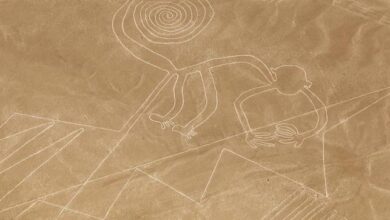A suspect may have been found in D. B. Cooper skyjacking case

 A small metal fragment detected on the tie linked to the notorious plane hijacker D.B. Cooper could hold vital clues to uncovering his true identity. Private investigator and researcher Eric Ulis is starting the new year by sharing intriguing new findings, reports fox13seattle.com.
A small metal fragment detected on the tie linked to the notorious plane hijacker D.B. Cooper could hold vital clues to uncovering his true identity. Private investigator and researcher Eric Ulis is starting the new year by sharing intriguing new findings, reports fox13seattle.com.
“I would not be surprised at all if 2024 was the year we figure out who this guy was,” said Ulis.
This tiny particle, a blend of stainless steel and titanium, has led Ulis to speculate that its origin could be traced to a sophisticated metal fabrication workshop.
Following his legendary disappearance 52 years ago, D.B. Cooper left a significant clue: a clip-on tie. After both the money and the man vanished mysteriously, this possession was found on Cooper’s seat at the back row of the plane, specifically 18-E. Ulis asserts that the tie was bought from a J.C. Penney store around Christmas in 1964 for $1.49.
Although the evidence is presently in federal custody, scientists who examined it managed to extract over 100,000 particles, shedding potential light on the investigation.

“He applied these sticky stubs, they’re like little carbon circles that he could apply to portions of the tie and then when you pull them off, you’re pulling off some of the particles from the tie,” explained Ulis. “You apply modern state-of-the-art technology to it, things they didn’t have back 1971 when this occurred, it tells a story.”
18 months ago, Ulis used U.S. patents to trace three of these fragments from the same very tie to a specific plant in Pennsylvania, Crucible Steel.
“Headquartered in the suburbs of Pittsburgh, a significant subcontractor all throughout the 1960s,” said Ulis. “It supplied the lion’s share of titanium and stainless steel for Boeing’s aircraft.”
Ulis claims evidence points to Cooper having in-depth knowledge of the 727 he hijacked, and of the Seattle area. Workers at Crucible Steel were known to travel and visit their contractor, Boeing.
“This is also the time, 1971, when Boeing had this significant downturn, the big depression, with ‘The last person leaving Seattle, please turn out the lights‘ [billboard sign],” said Ulis. “It’s reasonable to deduce that D. B. Cooper may well have been part of that downturn.”
Ulis admits his findings are not yet concrete. He’s not crossing any suspects off the list. However, he believes from what he’s seen, all roads lead to titanium research engineer Vince Peterson from Pittsburgh. Seen side-by-side with an artist’s rendering of Cooper, Peterson passed away in 2002.
“I can put him in Seattle, I can put him at Boeing,” said Ulis. “He’s a compelling person of interest. He’s definitely someone I’m going to continue to dig into.”




